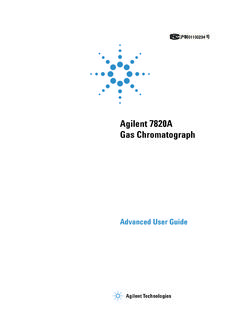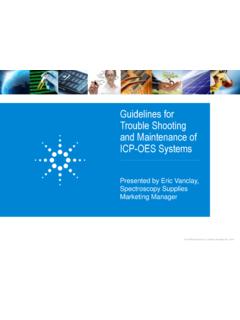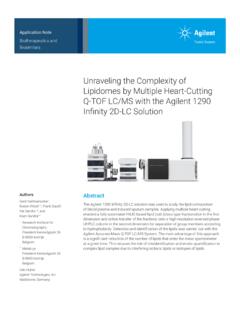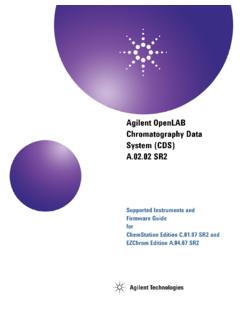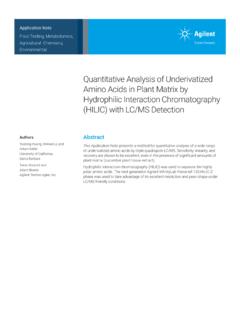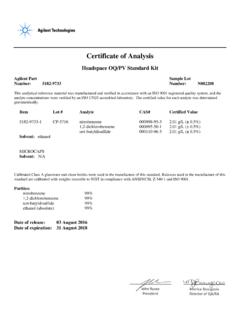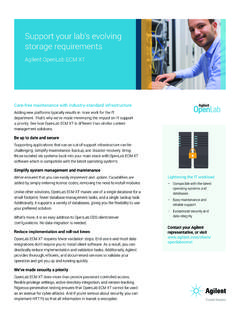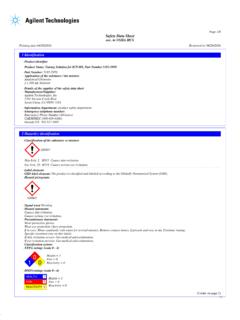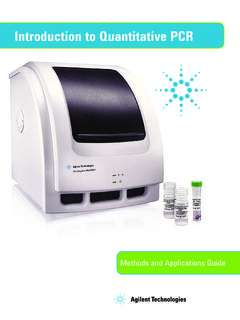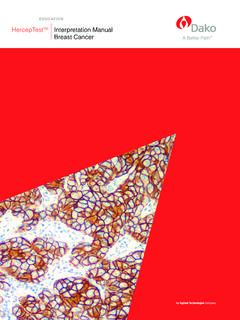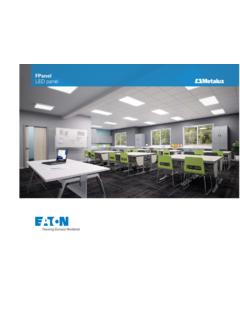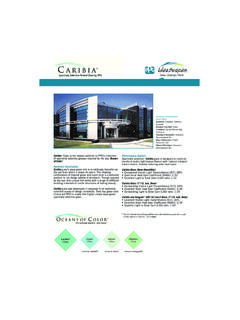Transcription of Maximizing Metabolite Extraction for …
1 AuthorsTheodore Sana and Steve FischerAgilent Technologies, Inc., Santa Clara, CA, USAM aximizing Metabolite Extraction for comprehensive MetabolomicsStudies of ErythrocytesApplication NoteAbstractMetabolomics is the comparative analysis of metabolites found in sets ofsimilar biological samples. Since metabolites play vital roles in biologicalsystems, metabolomics can be useful for finding and identifying biomarkers, orfor obtaining a better understanding of the effects of drugs or diseases on bothknown and unexpected biological metabolomic research requires effective Metabolite Extraction . Fornon-targeted metabolomics , Extraction methods need to capture a broad rangeof cellular and biofluid metabolites, while excluding components such asproteins that are not intended for analysis. Extraction is made more challengingby the physico-chemical diversity of metabolites and by Metabolite abun-dances that can vary by many orders of , liquid-liquid Extraction is often used to extract metabolites.
2 Thenature of the organic and aqueous solvents, their volumes, solvent ratios, andaqueous solvent pH, however, must be considered carefully. They can signi-ficantly affect the total number of metabolites extracted and application note describes a method for liquid-liquid Extraction of metabo-lites from erythrocytes. It demonstrates the importance of adjusting the aqueous/organic ratio to favor biphasic separation. It also demonstrates the effect ofaqueous-phase pH on the number of metabolites extracted and shows that toobtain as many metabolites as possible, extractions need to be performed atmultiple , in the presence of a weak acid, compoundscontaining basic groups form a soluble salt and become morewater soluble (Figure 3). Adding a dilute acid such as diluteformic acid (HCOOH) to the aqueous phase can improveextraction of compounds with organic base groups.
3 Formicacid is well suited to this application because it is misciblewith water and with most polar organic solvents that might be used as aqueous phase acid and ammonium hydroxide are good choices foradjusting the pH of the aqueous phase because they arevolatile and compatible with downstream LC/MS is the process by which compounds, such asmetabolites, are selectively separated from other, oftenundesired, compounds. One of the most common extractionmethods is liquid-liquid Extraction , which takes advantage of differential solvent solubility and solvent are transferred from one liquid phase to anotherliquid phase by adding to the original solution an immisciblesolvent in which the compounds are more , aqueous solutions are often paired with non-polarorganic solvents such as chloroform which is volatile, non-reactive, immiscible with and denser than water to form atwo-phase system for liquid-liquid Extraction (Figure 1).
4 Thispermits the separation of polar and non-polar metabolites forsubsequent chromatographic separation and analysis. The Folch 1method and its variant, the Bligh & Dyer 2method,have traditionally been used in the Extraction of lipids fromtissues and in subsequent separation from more polarmetabolites. Alcohols such as methanol, ethanol, and isopropanol aremiscible with water and may be used as aqueous phase co-solvents to enhance the solubility of less-polar metabolitesduring the Extraction Extraction of metabolites is typically performed atneutral pH. However, by taking advantage of the differences inmetabolite acid-base chemistry and varying the pH of theaqueous Extraction solvent, Extraction of Metabolite classesfrom either complex biofluids or cells can be example, most compounds that contain acid functionalgroups ( , carboxylic acids) are insoluble or only slightlysoluble in water.
5 Addition of a dilute base such as 2%ammonium hydroxide (NH4OH, pH = 9) results in a carboxylateanion with higher aqueous solubility (Figure 2). By adding analkaline solution of dilute ammonium hydroxide/methanol andchloroform to cells, any organic acids that would otherwise bedissolved in chloroform at neutral pH, can instead be extractedinto the basic polar PhaseAqueous PhaseHAHAH++A-Aqueous PhaseHAH++ A-Figure 1. If a compound is added to a solution of two immiscible liquids, itwill distribute between the two layers according to its relative solubility inthe two +ROO NH4+H2O+Figure 2. The addition of a dilute base such as 2% ammonium hydroxide(NH4OH, pH = 9) to a protonated carboxylic acid results in a carboxylateanion with higher aqueous solubility. R- can be any group of atoms attachedto the functional group +NH3+HCOO RFigure 3. The addition of 1% formic acid (HCOOH, pH = 2) to a protonatedamine results in a carboxylate anion with higher aqueous solubility.
6 R- canbe any group of atoms attached to the NH2functional was increased by about 10% due to methanol miscibilityin that phase. Hence, some non-polar compounds would beexpected to appear in the aqueous phase as extractionThe next experiment applied the aqueous/organic ratiodetermined previously to the Extraction of metabolites fromerythrocytes. The experiment followed the workflow shown inFigure mL aliquots of human donor erythrocytes (StanfordUniversity Blood Center) that had been pre-treated withsodium citrate anti-coagulant were placed in six mLmicrocentrifuge tubes. They were centrifuged at 1000 g and 4 C for 2 minutes, and then placed on ice while thesupernatant was wash cycle involving resuspension of the cells in phosphatebuffered saline (PBS), centrifugation, and aspiration of thesupernatant can be included at this point, although it was notin this experiment.
7 The wash cycle removes non-erythrocytemetabolites and other compounds that may still be presentoutside the cells, but it also delays quenching and lysing, andmay leave residual traces of phosphate NoteMaximizing Metabolite Extraction for comprehensive metabolomics Studies of ErythrocytesExperimentalThe first experiment was designed to determine the volumesand ratio of aqueous and organic solvents that would favorbiphasic separation and meet the other requirements forliquid-liquid Extraction of metabolites from erythrocytes. Thesecond experiment involved testing the aqueous/organic ratiodetermined in the first experiment on actual erythrocytesamples to verify its effectiveness and practicality. The thirdexperiment involved performing actual Extraction of metabo-lites from erythrocytes and determining via LC/MS analysishow variations in aqueous-phase pH would affect the numberand class of metabolites phase separationThe first experiment was performed to find the ratio ofaqueous solvent to organic solvent that would result in optimum phase separation.
8 Equal volumes ( mL) of80:20 methanol/water were placed in six capacitymicrocentrifuge tubes. This methanol/water ratio was usedbecause at lower ratios there is a risk of the solution freezingduring the Extraction process. Increasing volumes of chloro-form, from mL to mL in mL increments, were addedto each tube (Figure 4). Sudan I, a lipid-soluble diazo dye3that is preferentially solublein non-polar solvents and imparts a bright yellow/orange colorto chloroform, was added to permit visualization of thechloroform phase and provide an indication of the degree ofmiscibility between the polar and non-polar phases. None ofthe tubes exhibited biphasic separation at this point. Anadditional mL of water was added to each tube to drivephase separation and each tube was centrifuged to make thephase separation more distinct. No obvious phase separation occurred at the lowest chloro-form volumes ( and mL), even after centrifugation.
9 Fortubes that did show separation, the chloroform phase wasrecovered and measured. Chloroform volumes over mL allhad similar recovery rates. Due to partial miscibility betweenchloroform and methanol, some of the dye was still visible inthe aqueous phase. Similarly, the volume of the chloroformFigure 4. Increasing volumes of chloroform and mL aliquots of 80:20methanol/water were mixed to simulate the Extraction step. An mL of water was subsequently added to help drive phase I, a lipid-soluble diazo dye was added to aid visualization of phaseseparation. Color banding within the aqueous (upper) half is due torediffusion of chloroform into the aqueous 5. Workflow for liquid-liquid Extraction of metabolites from erythrocytes using a single mL microcentrifuge mL of the erythrocyte samples in a mL microcentrifuge tubeCentrifuge at 1000 g for 2 minutes at 4 CPlunge the tube into dry ice or a circulatingbath at 25 C for minutesPlace the tube on ice (maintain ~ 4 C environment)Plunge the tube into a water bath at 37 C for minutesAspirate the supernatant, being careful not to remove any erythrocytes Resuspend the erythrocytes by adding mL of ice cold, ultra-pure water(Milli-Q or equivalent)
10 Add mL of 20 C methanolVortex the tube to ensure complete mixingAdd mL chloroform to each tubeVortex the tubes briefly every 5 minutesfor 30 minutes, returning the tubes to the cold bath between vortexingTransfer the tubes to room temperatureCentrifuge the tube at 1000 g for 1 minute at 4 CTransfer the tube to 20 C freezer for 2 8 hoursTransfer the top and bottom phases to separate mL tubes avoid transferingthe erythrocytes at the interphaseTransfer the tubes to room temperatureAdd mL of ice cold, pH-adjusted ultrapure water (Milli-Q or equivalent) to the tubeResuspend the content of each tube by adding mL of initial LC mobile phase (i n this case ultra-pure water / 2% acetonitri le / formic acid)Dry both of the resulting tubes under vacuum (SpeedVac or equivalent) NoteMaximizing Metabolite Extraction for comprehensive metabolomics Studies of mL of ice cold, ultrapure (Milli-Q) water was added toeach tube to resuspend the erythrocytes.
